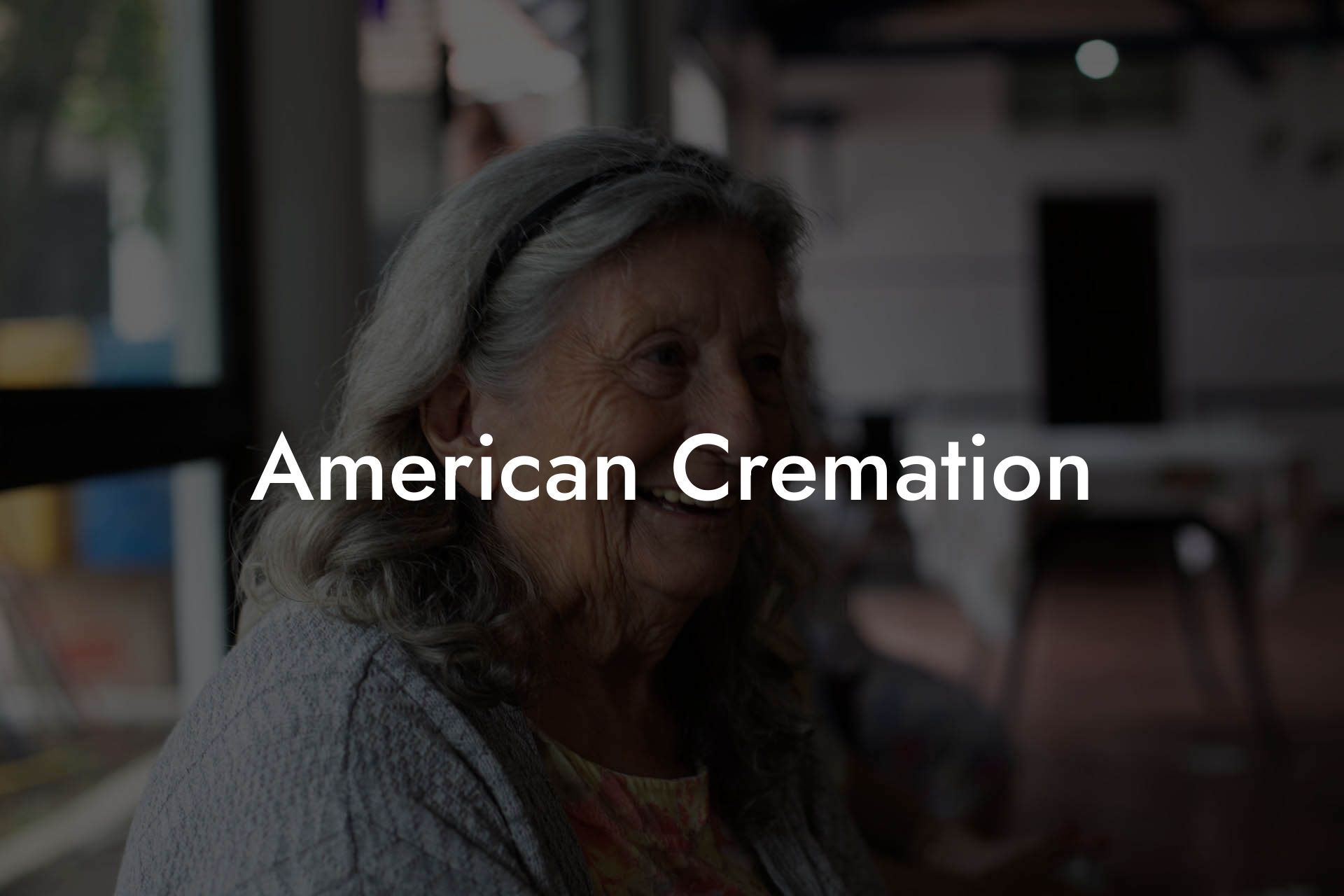Imagine a world where death is not just an ending, but a new beginning – a chance to celebrate life, honor loved ones, and reconnect with the natural world. Welcome to the world of American cremation, where tradition meets innovation, and the possibilities are endless.
Quick Links to Useful Sections
What is Cremation, Anyway?
Cremation is a dignified and eco-friendly way to lay your loved ones to rest. It's a process that reduces the body to its basic elements, leaving behind a few pounds of ashes that can be scattered, buried, or kept in a special urn. But cremation is more than just a practical solution – it's a chance to rethink the way we approach death, grief, and remembrance.
In the United States, cremation is becoming increasingly popular, with over 50% of Americans choosing cremation over traditional burial. And it's not hard to see why: cremation is cost-effective, environmentally friendly, and offers a range of creative and meaningful ways to celebrate a life well-lived.
The History of Cremation in America
While cremation has been around for thousands of years, its history in America is a fascinating story of cultural and social change. From its early days as a radical alternative to traditional burial, to its current status as a mainstream choice, cremation has come a long way.
In the late 19th century, cremation was seen as a threat to traditional funeral practices, and was even banned in some states. But as attitudes towards death and dying began to shift, cremation started to gain popularity. Today, cremation is a respected and widely accepted option, with many funeral homes and cemeteries offering cremation services.
The Benefits of Cremation
So, why are more and more Americans choosing cremation? Here are just a few of the benefits:
- Cost-effective: Cremation can be significantly cheaper than traditional burial, with costs ranging from $1,000 to $3,000.
- Environmentally friendly: Cremation reduces the body to its basic elements, eliminating the need for embalming fluids, caskets, and land use.
- Flexibility: Cremation offers a range of options for memorialization, from scattering ashes in a special place, to creating a unique urn or memorial.
- Personalization: Cremation allows families to create a personalized and meaningful farewell, that reflects the personality and spirit of their loved one.
The Cremation Process: What to Expect
So, what happens during the cremation process? Here's a step-by-step guide:
- Preparation: The body is prepared for cremation, which may include washing, dressing, and cosmetic work.
- Cremation: The body is placed in a cremation chamber, where it is exposed to high temperatures, reducing it to ashes.
- Processing: The ashes are processed into a fine powder, and placed in an urn or container.
- Return of ashes: The ashes are returned to the family, who can then choose to scatter, bury, or keep them in a special place.
Cremation Options: From Traditional to Unique
One of the best things about cremation is the range of options available. From traditional urns and memorial services, to unique and creative ways to celebrate a life, the possibilities are endless.
- Scattering gardens: Many cemeteries and memorial parks offer scattering gardens, where ashes can be scattered in a peaceful and natural setting.
- Sea scattering: Ashes can be scattered at sea, creating a beautiful and symbolic farewell.
- Tree planting: Ashes can be mixed with soil and used to plant a tree, creating a living memorial.
- Artistic urns: Urns can be customized with artwork, engravings, or other personal touches, making them a unique and meaningful tribute.
Cremation and Grief: A New Way to Mourn
Cremation can also change the way we approach grief and mourning. By creating a more flexible and personalized farewell, cremation can help families to process their emotions and find closure.
From memorial services and celebrations of life, to online tributes and social media memorials, cremation offers a range of ways to honor and remember loved ones.
Frequently Asked Questions About Cremation
Here are some frequently asked questions about cremation:
1. Is cremation a safe process?
Yes, cremation is a safe and controlled process, with strict regulations in place to ensure that it is carried out with dignity and respect.
2. Can I still have a funeral or memorial service with cremation?
Yes, many families choose to hold a funeral or memorial service before or after the cremation process, to celebrate the life of their loved one.
3. What happens to the ashes after cremation?
The ashes are returned to the family, who can then choose to scatter, bury, or keep them in a special place.
4. Is cremation more environmentally friendly than traditional burial?
Yes, cremation is a more environmentally friendly option than traditional burial, as it reduces the need for land use, embalming fluids, and other resources.
Resources and Community Support: Your Next Steps
If you're considering cremation, or have already chosen this option, here are some resources and community support to help you on your journey:
- Cremation associations: Many states have cremation associations that provide information, resources, and support for families.
- Online forums and support groups: There are many online forums and support groups dedicated to cremation, where you can connect with others who have gone through a similar experience.
- Cremation providers: Many funeral homes and cremation providers offer support and guidance throughout the cremation process.
- Grief counseling: Don't forget to take care of yourself during this difficult time – consider seeking out grief counseling or therapy to help you process your emotions.

